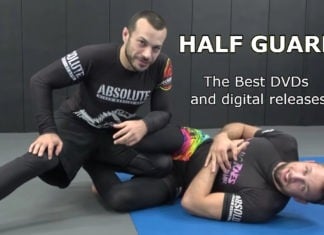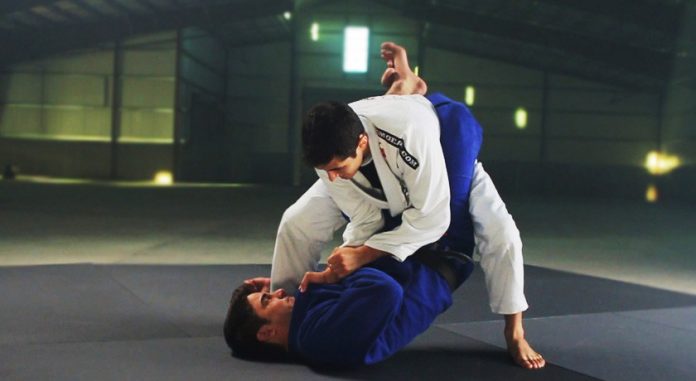
Today’s article is going to be all about a BJJ position that often puzzles even the most experienced grapplers. It is the first position you learn, a trademark Jiu-Jitsu prone, and one that remains very difficult to battle against all the way to black belt. The interesting fact is that the more you like attacking from it, the worse you probably are at dealing with it. The position in question is the closed guard, and today’s subject is passing it.
The closed guard is probably the one position that truly depicts the spirit of Brazilian Jiu=Jitsu. It is on that helped make the Gentle Art famous worldwide and a staple of BJJ fundamentals. Undoubtedly, during your first couple of weeks of training, you got exposed to the closed guard at one point or another. Most likely, your first encounter with the closed guard is from a passing perspective, which never translates to a pleasant experience. However, when most students figure out the power of the full guard, especially new ones, they tend to stay there for quite a while. Some even take it to such a high level that they make top-class competitive careers out of it.
The evolution of the game and diversity in closed guard variations are among the main reasons why this guard is so difficult to pass. Well, that and superior mechanics. For the person on the bottom, there’s very little effort required for attacking and/or controlling. the person on top has to find a way to nullify all attacks long enough to first open the guard. Then, they have to figure out how to keep it open before attempting to pass. Not an easy task at all, but neither an unachievable one. It is time to take a look at the various options available to the top player.
Check out the best passing resource and the best guard passing instructionals of 2018 HERE.
Why Is the Closed Guard So Annoying To Pass?
Well, primarily, the reason the closed guard can be frustrating is in its very nature. AS the name suggests, it represents a closed circuit, one in which there’s no easy way out. Since the person playing guard is already on the bottom, there’s no gravity to fight against. In fact, gravity is their friend. Furthermore, establishing and maintaining grips is way easier than doing so from the top.
In terms of positioning, the legs provide an immense controlling opportunity due to their configuration. Having the legs crossed behind an opponent’s back provides two great advantages. First. the placement just above the hips provides both hip and torso control. Secondly, the fact that the weakest point (the cross) is behind the opponent’s back means the structure is well protected. Factor in the grip supremacy and you have a real mess to deal with.
But that’s not all. The system for attacking from the closed guard is such that it only entangles you deeper if you do not act in time. This position has gotten a lot of attention during the years and there’s a surprisingly large arsenal of weapons available. From sweeps, through transitions an all the way to a myriad of submissions, the full guard is a tricky spot to be in. If you rush just one thing, you’re going to have to start all over again (and that’s the best case scenario). The likelier version of events is that you’ll get swept or stuck in a submission.
However, there is hope. All it takes is patience, knowing what NOT to do, and then going for the things you’re supposed to do. Those area s follows:
The Main Principles Of Opening And Passing
When in the open guard, you need to learn to prioritize the sequence of events. That means focusing on the major threats first, then looking to establish control and finally, breaking apart the guard and passing.
To do this you must remember that the number one priority are grips. An opponent with good grips from the bottom can make your time in the guard even more unpleasant. Drill grip breaks until you get bored with them, and then drill some more. There’s no way of overemphasizing the importance of the “no-grips” principle for closed guard passing.

Next, you need to apply the BJJ tripod principle. This means, acquiring posture first (which is something your opponent is going to look to break). Then, you move on to a solid base, to help you retain that posture. Expect to continuously grip fight while you’re fighting for base and posture. Finally, when everything is set, you’ll look to establish a dominant structure that’ll allow you to think about passing.
Only when you’re safe, and you have superior positioning, you can proceed to actually open the guard. In order to open it, you have a few options which greatly depend on what your opponent is doing. Generally, there are three main ways of opening and passing the closed guard:
1. Passing From the Knees
This is the most “basic” way of passing the closed guard. The advantage here is that gravity is less of a factor for you to worry about which means retaining posture is easier. The drawback is that it is easy for an experienced opponent to keep you in guard. Namely, as you move your base to open, they’ll be looking to shift ever so slightly back into position. This is where your structure (via grip fighting) comes into play.
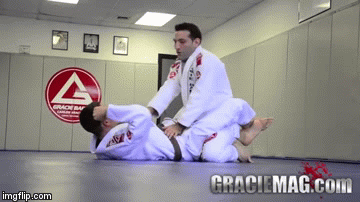
To open the closed guard from the knees you need to have one of your arms tucked between your torso and the opponent’s knee. This makes it inaccessible to them. Just remember not to put it behind your back or you’ll be in a triangle before you know it. Next, the main thing you absolutely have to do from this position controls the opponent’s hips. The more pressure on their hips, the harder it will be for them to re-adjust when you open. The basic position is placing your arm on their belly, pushing slightly upwards towards the sternum. Remember to keep the elbow deep into their thigh.
Which brings us the second arm. You can keep it there and attempt to open directly or go for even more control. To get it, take your tucked arm and place the palm on the most prominent point of their pelvis (on the same side). This is going to cause their hips to go out of balance and there’ll be no way for them to follow.
Finally, opening the guard should be easy once you have base, posture, and structure (i.e. control). You can either go from the knees or with one foot on the mat. If you choose the latter, raise the leg that’s on the side of the pelvis control.
2. Standing Passes
Standing passes enter the frame when there’s one grip you just can’t get rid of. Most likely, this is going to be a sleeve grip. Instead of fighting for it the whole match, you’re going to use it to your advantage. Just make sure it’s not a collar grip or you’ll never get posture.
Use the grip your opponent has to establish a grip of your own on their arm. Grip both their lapels with your other arm and tuck the first one under. Now you have their arm trapped. Once you have it, it’s safe for you to attempt to stand up. Do not worry about what your opponent does, apart from keeping that one arm trapped.

Standing up requires you to place a foot on the ground. Since you have one arm trapped, you’re going to step up on that side first. That’ll give you the base you need to get your other foot on the ground as well. Keep perfect posture throughout teh motion if you do not wish to find yourself back in the closed guard. Once you’re standing tall, use the grip you had on the lapels to push down on their same side knee. make a small step back at the same time and you’re going to pop their guard with ease. Pass with a sequence of your own choosing.
3. Passing Without Posture
THere area certain situations out there that require you to defy all of the rules above. This means passing with no posture and/or structure. When you can’t get your posture back from an opponent you need to think about changing passing strategies. namely, there’s a system of passing named the Sao Paolo pass which works perfectly in this scenario. Keep in mind that it is a more advanced option and beginners should look to the basics first.
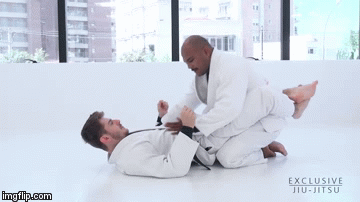
For the Sao Paolo, you need to go as forward as possible, placing one of your arms as an underhook. Make sure your palm goes as high above the opponent’s head s possible. Next, you’ll need to rotate to the side, so that your opponent’s guard comes at a side. Once there you’re going to break another principle and place your free arm behind to pry open their ankles. Once they’re open you’re going to find yourself directly in top half guard.
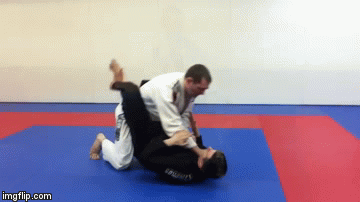
As an alternative, you can also hit the Amassa Pao. When an opponent has your posture broken you can take a slightly risky approach and place an arm on their collar at neck height. You’re then going to jump up with both feet and extend that arm as straight as you can. The point is to place as much pressure as you can on their neck, which means you’ll need to be net forward, sacrificing posture. Another key thing to remember is to be an angle towards the arm on the collar, to prevent armbars, CHoke or pass, the choice is going to be your opponent’s.
Check Also:
Rubber Guard: The Meathook DVD by Brandon McCaghren
Review Of The Top 5 Guard Passing BJJ DVD Instructionals
Jiu-Jitsu Techniques For A Complete Competition Gameplan
Turtle up! A Quick Guide To The Forgotten Turtle Guard

















